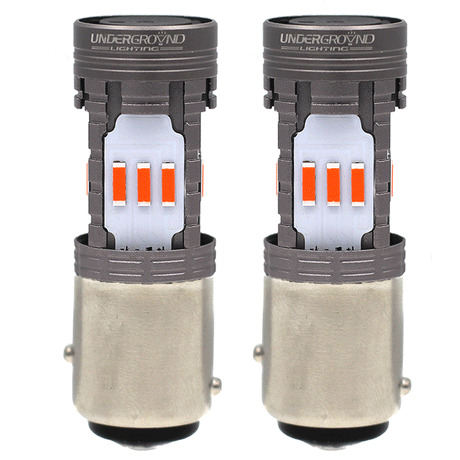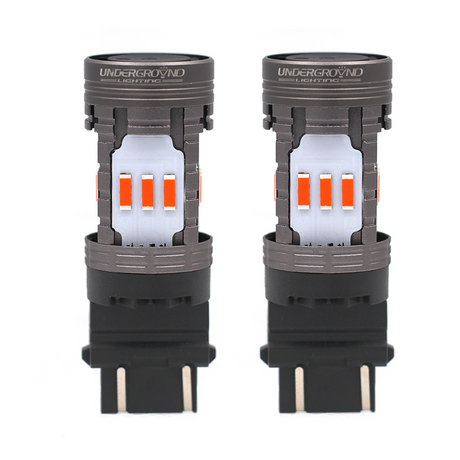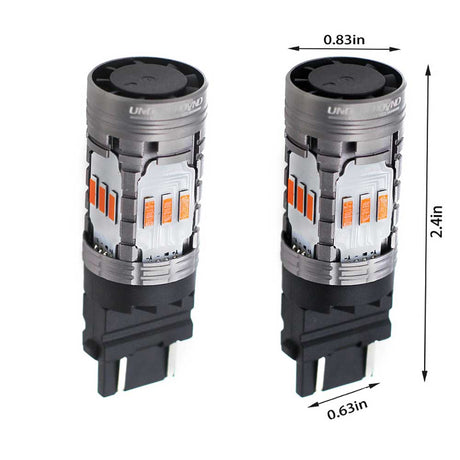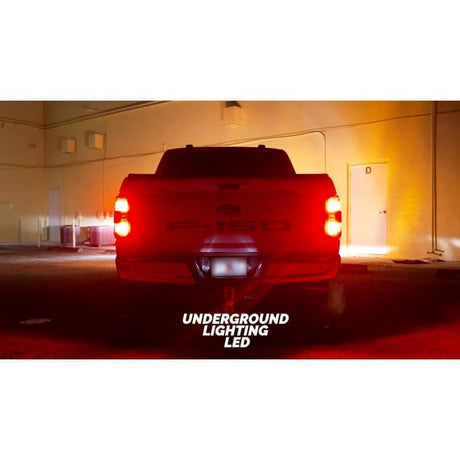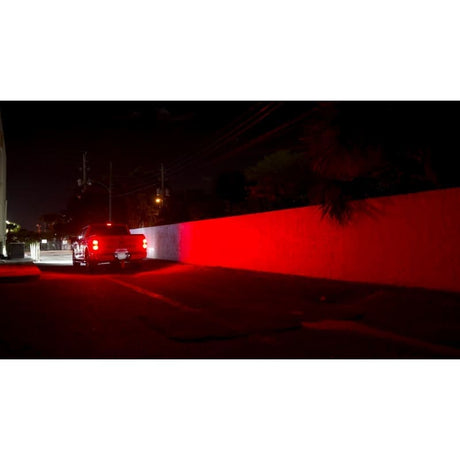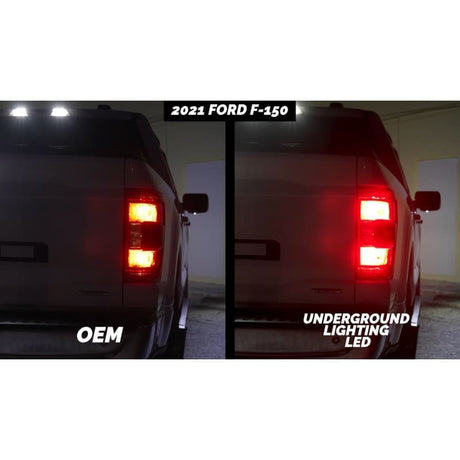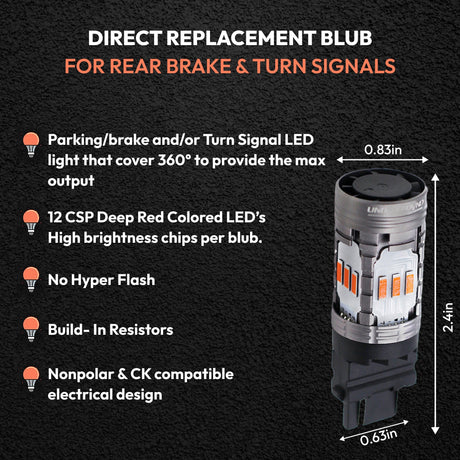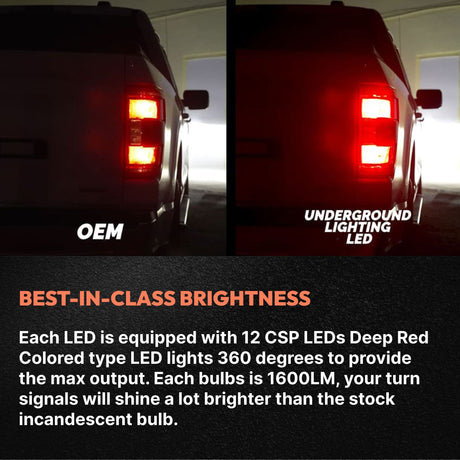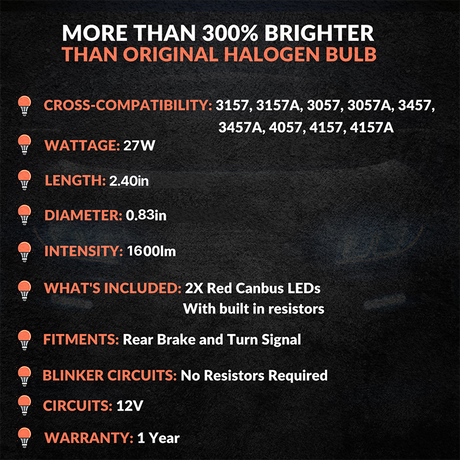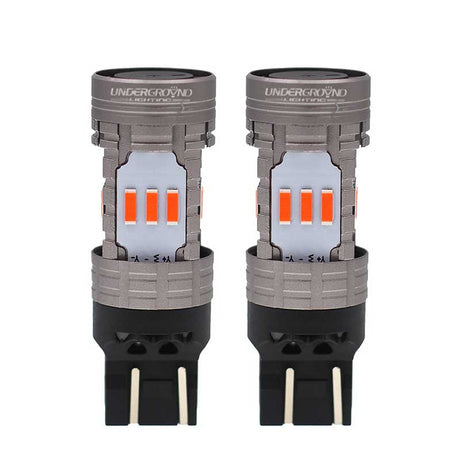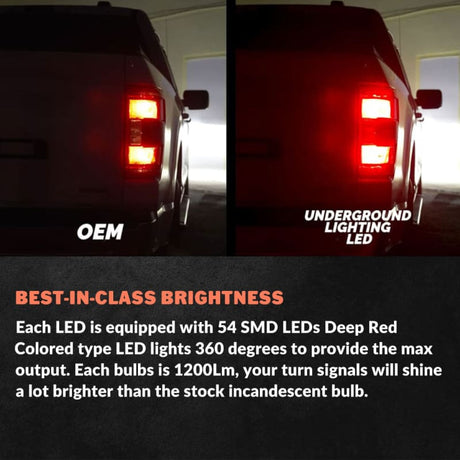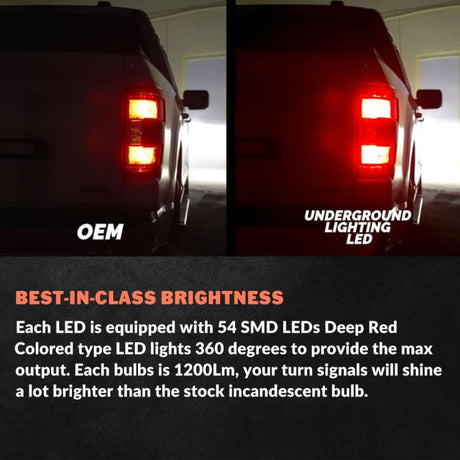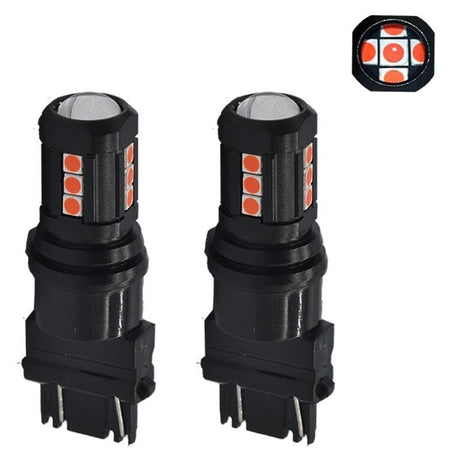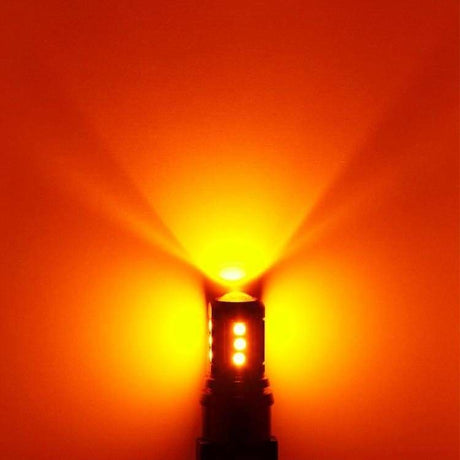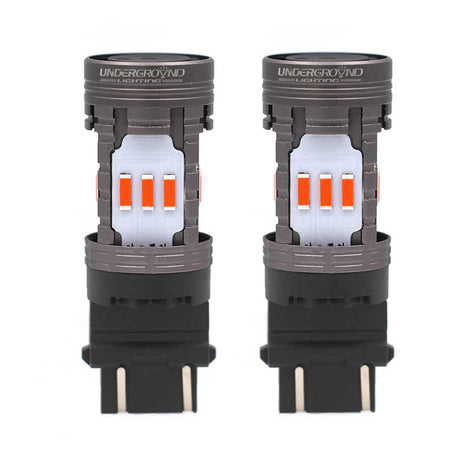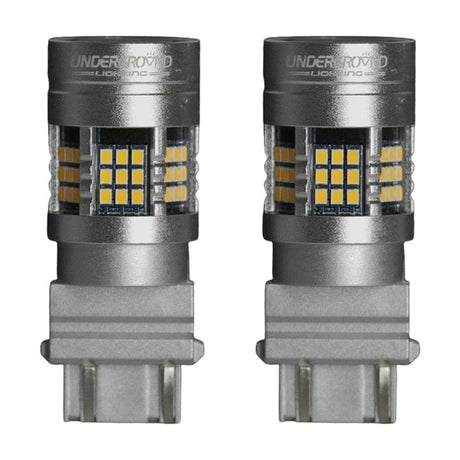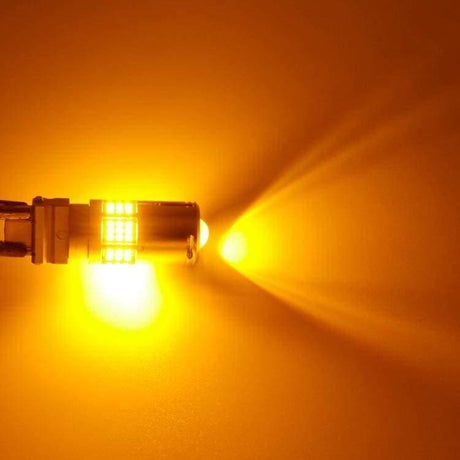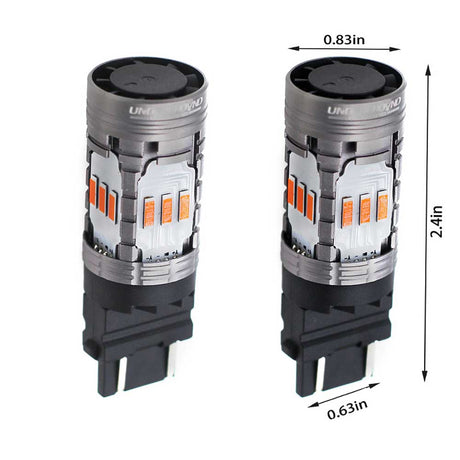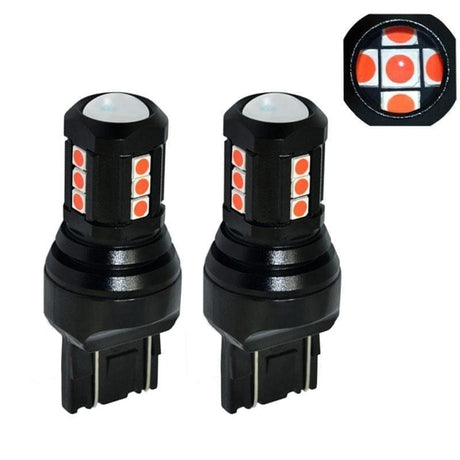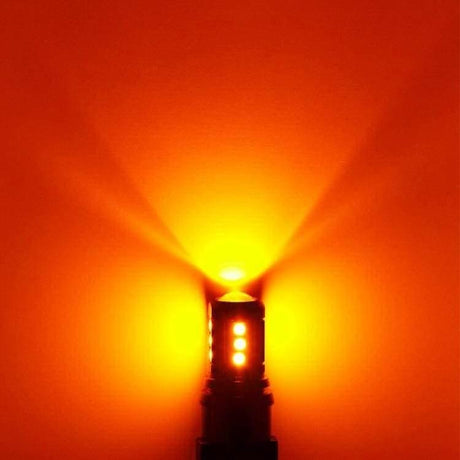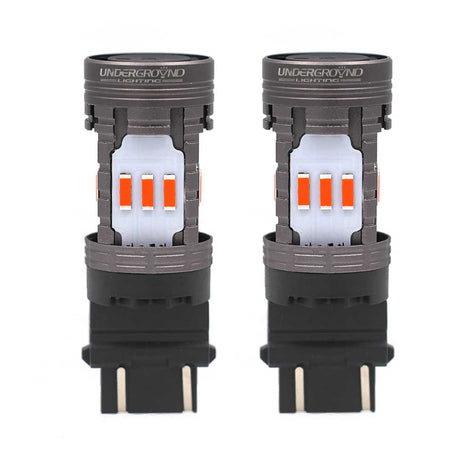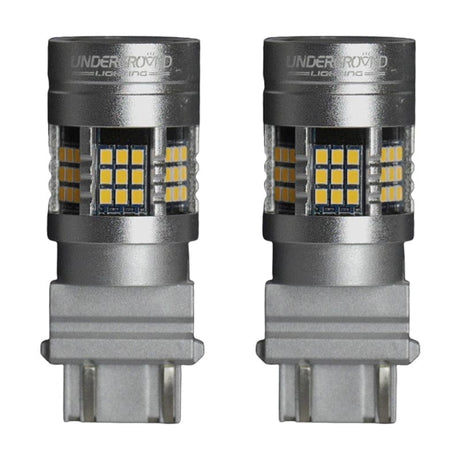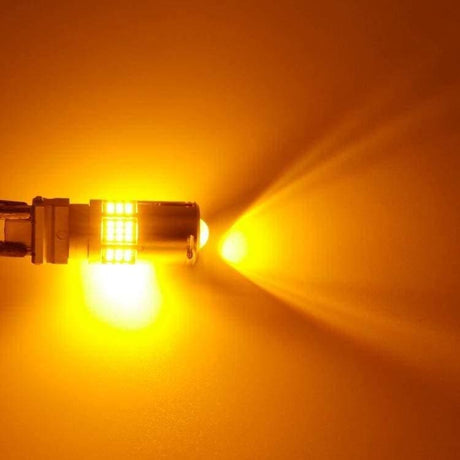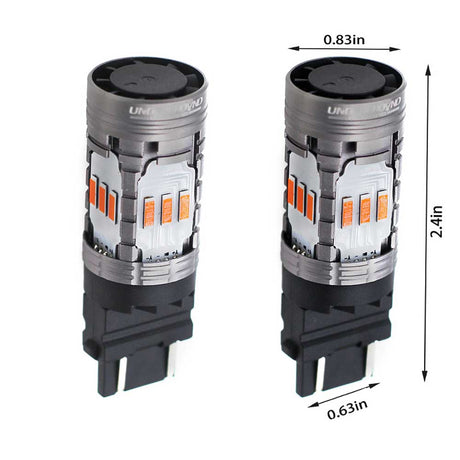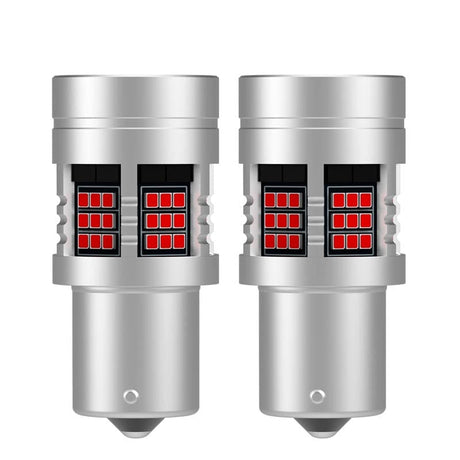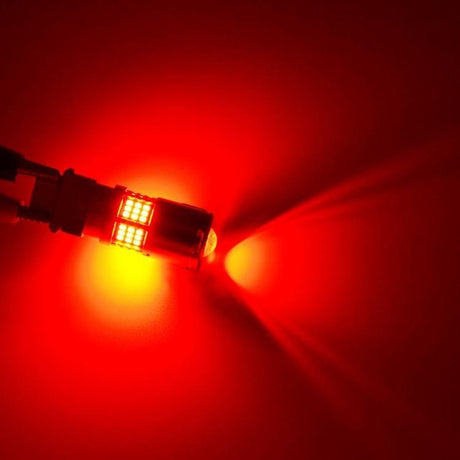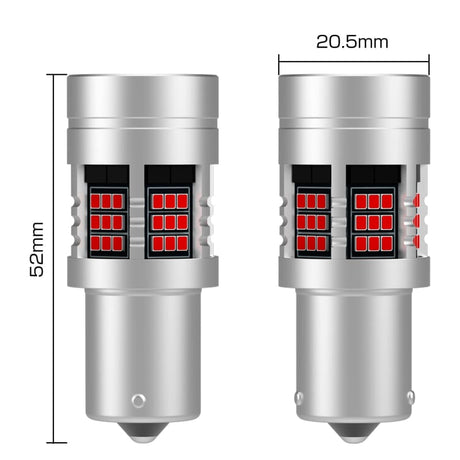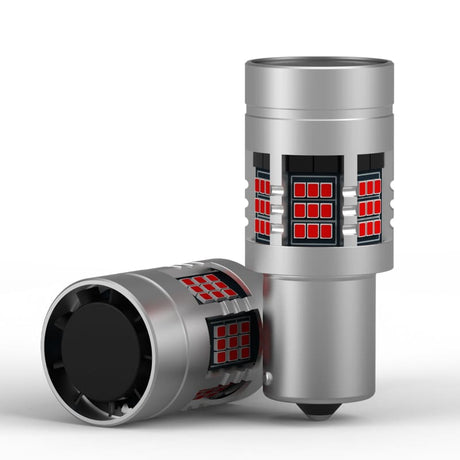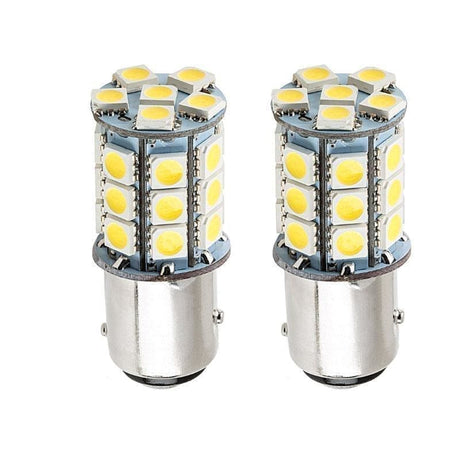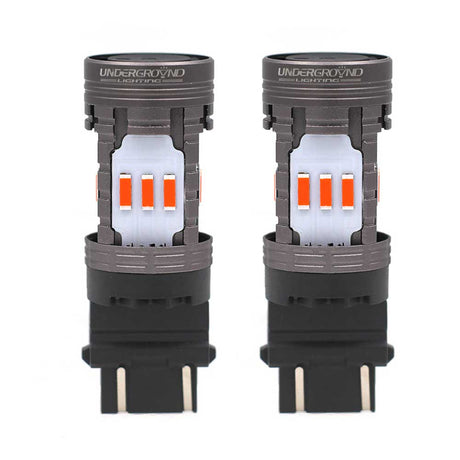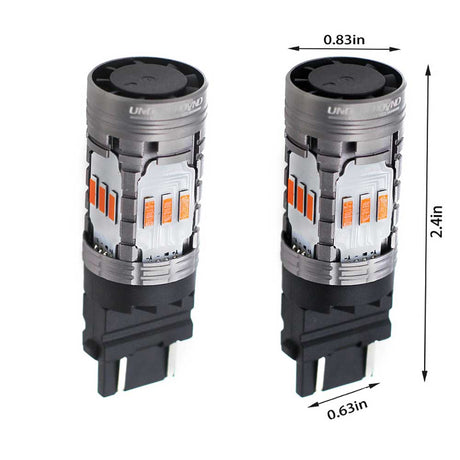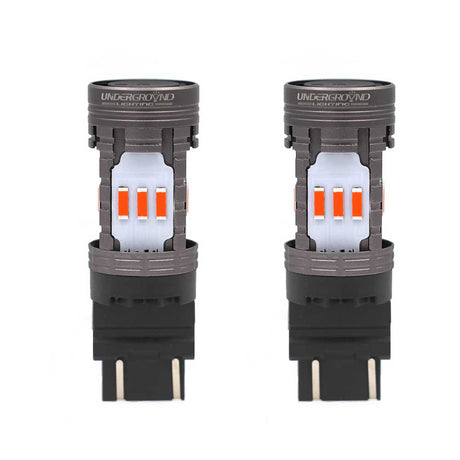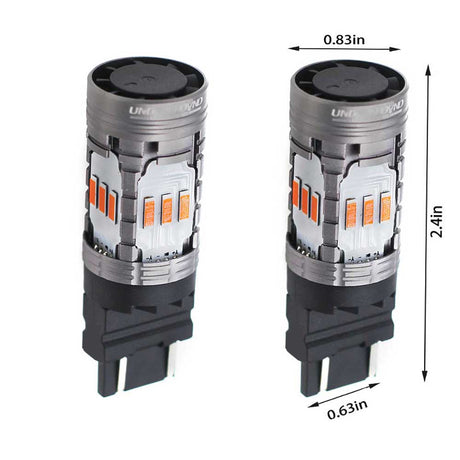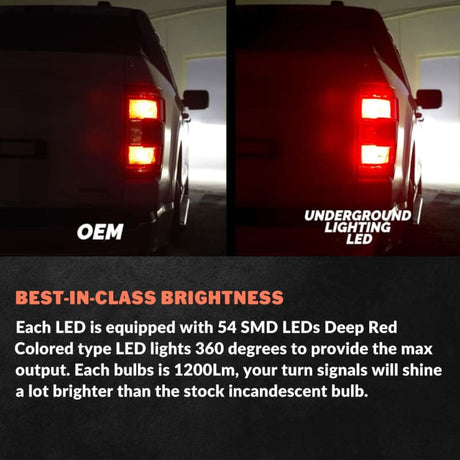Underground Lighting
1157 Red Brake Light Bulb and Turn Signal LED W/ Built in Resistors No Hyperflash (PAIR)
Sale price $64.99 Regular price $69.99Unit price /Unavailable- 7% off
Underground Lighting
1997-2020 Ford F Series LED Rear Turn Signal Bulbs W/ Built in Resistor No hyperflash (PAIR)
Sale price $64.99 Regular price $69.99Unit price /Unavailable - 7% off
Underground Lighting
Sale price $64.99 Regular price $69.99Unit price /Unavailable - 7% off
Underground Lighting
2014-2021 GMC Sierra Red LED Rear Turn Signal Bulbs W/ Built in Resistor No hyperflash (PAIR)
Sale price $64.99 Regular price $69.99Unit price /Unavailable Underground Lighting
3156/3157 Red Tail Light LED Bulbs (PAIR)
Regular price $39.99Unit price /Unavailable- Up to 7% off
Underground Lighting
1999-2013 Chevrolet Silverado LED Rear Turn Signal Bulbs W/ Built in Resistor No hyperflash (PAIR)
Sale price $64.99 Regular price $69.99Unit price /Unavailable Underground Lighting
7440/7443 Red Tail Light LED Bulbs (PAIR)
Regular price $34.99Unit price /Unavailable- Up to 7% off
Underground Lighting
1999-2014 GMC Sierra LED Rear Turn Signal Bulbs W/ Built in Resistor No hyperflash (PAIR)
Sale price $64.99 Regular price $69.99Unit price /Unavailable - 7% off
Underground Lighting
1156 Red Brake light, Turn Signal LED W/ Built in Resistors No Hyperflash (PAIR)
Sale price $64.99 Regular price $69.99Unit price /Unavailable Underground Lighting
27-SMD-5050 1157 Ba15S LED bulbs, 360-Degree Shine T20 (2 Pieces)
Regular price $39.99Unit price /Unavailable- 7% off
Underground Lighting
3157 Red Brake Light, Turn Signal LED W/ Built in Resistors No Hyper Flash (PAIR)
Sale price $64.99 Regular price $69.99Unit price /Unavailable Underground Lighting
2021-25 Ford F150 Red Rear Brake/ Turn Signal LED Bulb W/ Built in Resistor No hyperflash (PAIR)
Regular price $69.99Unit price /Unavailable- 7% off
Underground Lighting
7443/7444 Red Brake light Bulbs, Turn Signal LED W/ Built in Resistors No Hyper Flash (PAIR)
Sale price $64.99 Regular price $69.99Unit price /Unavailable
Upgrade to LED Brake Lights and Red Tail Bulbs for Enhanced Safety and Style
Advantages of Installing LED Brake Lights
-
Improved Safety
-
Lightning-Fast Response
-
Exceptional Durability
-
Long-Lasting Performance
-
Energy Efficient
-
Cost-Effective

